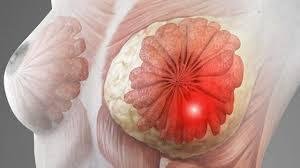Stage 4 Breast Cancer Survival Rates and Prognosis: A Comprehensive Guide
Learn about Stage 4 breast cancer survival rates, prognosis, and factors affecting outcomes in this comprehensive guide. Get informed for better decision-making

A diagnosis of stage 4 breast cancer, also known as metastatic breast cancer, can feel overwhelming. While it’s classified as an advanced, incurable disease, advancements in treatment have transformed it into a condition many patients can manage for years. Understanding survival rates, prognosis, and the factors that influence outcomes can empower patients and families to navigate this journey with hope and clarity. This article explores the latest data, treatment innovations, and strategies to improve quality of life.
1. Understanding Stage 4 Breast Cancer
Stage 4 breast cancer occurs when cancer cells spread beyond the breast and nearby lymph nodes to distant organs such as the bones, liver, lungs, or brain. This metastasis happens when cancer cells enter the bloodstream or lymphatic system. Unlike early-stage cancers, stage 4 is considered chronic rather than curable, with treatment focused on prolonging life, managing symptoms, and maintaining quality of life.
Approximately 6% of breast cancer cases are diagnosed at stage 4 initially (de novo metastatic), while others progress to this stage after earlier treatment. Metastatic breast cancer can recur years or even decades after initial remission, highlighting the importance of long-term monitoring.
2. Survival Rates: Current Statistics
Survival rates provide a general outlook but don’t predict individual outcomes. The 5-year relative survival rate for stage 4 breast cancer is 30%, according to the American Cancer Society’s SEER database. However, this statistic varies widely based on:
· Cancer subtype (e.g., hormone receptor-positive, HER2-positive, or triple-negative).
· Location and extent of metastases.
· Response to treatment.
· Overall health and age.
Median survival (the time at which 50% of patients are still alive) ranges from 2–5 years, though many live longer. For example:
· Hormone receptor-positive (HR+)/HER2-negative: Median survival of 2–3 years, but some survive a decade or more with targeted therapies.
· HER2-positive: Median survival now exceeds 5 years due to anti-HER2 drugs like trastuzumab.
· Triple-negative breast cancer (TNBC): Historically poorer prognosis (median 12–18 months), but immunotherapy is improving outcomes.
Advances in personalized medicine are steadily improving these numbers, with some patients living 10+ years with controlled disease.
3. Factors Influencing Prognosis
A. Cancer Biology
· Hormone Receptor Status: HR+ cancers (ER+/PR+) often respond well to hormonal therapies like aromatase inhibitors or CDK4/6 inhibitors (e.g., palbociclib), extending survival.
· HER2 Status: HER2-positive cancers, once aggressive, now have improved prognosis with drugs like trastuzumab, pertuzumab, and antibody-drug conjugates (e.g., Enhertu).
· Triple-Negative Breast Cancer (TNBC): Lacks HR and HER2 receptors, limiting treatment options, but checkpoint inhibitors (e.g., pembrolizumab) and PARP inhibitors (e.g., olaparib) are changing the landscape.
B. Metastatic Sites
· Bone metastases generally have a better prognosis than visceral metastases (liver, lung, or brain).
· Brain metastases are challenging but may respond to targeted radiation (e.g., stereotactic radiosurgery) or new blood-brain-barrier-penetrating drugs.
C. Patient Factors
· Age and overall health: Younger, healthier patients often tolerate aggressive therapies better.
· Genetic mutations: BRCA1/2 mutations may make tumors more responsive to PARP inhibitors.
· Treatment adherence: Consistency with therapy impacts outcomes.
4. Treatment Goals and Options
Treatment aims to control cancer growth, relieve symptoms, and prolong survival. Options are tailored to the cancer’s biology and metastasis sites:
A. Systemic Therapies
· Hormonal Therapy: First-line for HR+ cancers. Combined with CDK4/6 inhibitors, it can halt progression for months to years.
Targeted Therapies:
HER2-directed drugs (trastuzumab, fam-trastuzumab deruxtecan).
PARP inhibitors for BRCA-mutated cancers.
PI3K inhibitors (e.g., alpelisib) for PIK3CA-mutated HR+ cancers.
· Chemotherapy: Used for rapid symptom control or TNBC.
· Immunotherapy: Pembrolizumab + chemotherapy is approved for PD-L1-positive TNBC.
B. Local Treatments
· Radiation: Manages pain from bone metastases or treats brain lesions.
· Surgery: Rarely used but may stabilize fractures or relieve organ blockages.
C. Clinical Trials
Experimental therapies, such as CAR-T cell therapy or novel antibody-drug conjugates, offer access to cutting-edge treatments.
5. Quality of Life and Supportive Care
Living with stage 4 breast cancer requires balancing treatment efficacy with quality of life:
· Pain Management: Opioids, NSAIDs, or nerve pain medications.
· Mental Health: Counseling, support groups, or antidepressants to address anxiety and depression.
· Palliative Care: Specialized teams help manage symptoms and improve daily functioning.
· Nutrition and Exercise: Maintaining strength and reducing fatigue.
6. Advances Improving Survival
Recent breakthroughs are reshaping prognoses:
· CDK4/6 Inhibitors (ribociclib, abemaciclib): Boost median survival in HR+ cancers to 5+ years.
· Antibody-Drug Conjugates (ADCs): Drugs like Enhertu deliver chemotherapy directly to cancer cells, reducing side effects.
· Liquid Biopsies: Blood tests detect cancer DNA, enabling earlier treatment adjustments.
· Oligometastatic Disease: Aggressive treatment of limited metastases (e.g., surgery/radiation) may improve survival in select patients.
7. The Role of Mindset and Advocacy
While statistics provide a framework, individual outcomes vary. Advocacy groups like Metastatic Breast Cancer Network (MBCN) emphasize:
· Self-education: Understanding your cancer’s biology and treatment options.
· Second opinions: Consulting specialists at academic centers.
· Community support: Connecting with others via organizations like Living Beyond Breast Cancer.
8. Conclusion
A stage 4 breast cancer diagnosis is life-altering, but it’s no longer the dire prognosis it once was. With evolving therapies, many patients achieve prolonged periods of stability, enjoying meaningful time with loved ones. Survival rates are improving incrementally, and emerging research offers hope for even greater gains.
Key takeaways:
· Prognosis depends on cancer biology, treatment response, and overall health.
· Targeted therapies and clinical trials are transforming outcomes.
· Quality of life should remain a central focus of care.
By staying informed, advocating for personalized treatment, and embracing supportive care, patients can navigate this journey with resilience and hope.
What's Your Reaction?

















